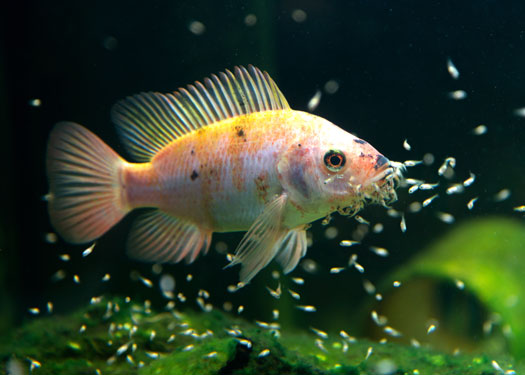
A Comprehensive Guide to Caring for Baby Fish
Welcoming baby fish into your aquarium can be an exciting and rewarding experience. However, these delicate creatures require specialized care to thrive. This comprehensive guide will provide you with all the essential knowledge and techniques to ensure the well-being of your tiny aquatic charges.
Understanding Baby Fish Biology
Baby fish, also known as fry, are newly hatched fish that are still developing. They are extremely vulnerable and require specific conditions to survive. Unlike adult fish, fry have underdeveloped digestive systems, limited mobility, and are highly susceptible to environmental changes.
Setting Up the Ideal Environment
Tank Size and Filtration:
Choose a tank that is appropriately sized for the number of fry. A 10-gallon tank is suitable for a small batch of fry, while larger tanks are recommended for larger groups. Ensure the tank has a reliable filtration system to maintain water quality.
Water Parameters:
Baby fish are sensitive to water parameters. Maintain the following conditions:
- Temperature: 75-80°F (24-27°C)
- pH: 6.5-7.5
- Ammonia and Nitrite: 0 ppm
- Nitrate: <20 ppm
Lighting:
Provide 12-14 hours of light per day. Avoid excessive lighting, as it can stress the fry.
Feeding Baby Fish
Frequency and Amount:
Feed fry several times a day, offering small amounts of food at each feeding. Overfeeding can lead to water quality issues and health problems.
Type of Food:
Baby fish require specialized food that is small enough for their mouths. Options include:
- Live food: Baby brine shrimp, daphnia, or microworms
- Commercial fry food: Finely ground flakes or pellets
- Infusoria: Microscopic organisms that can be cultured at home
Feeding Techniques:
- Use a pipette or syringe to gently distribute food near the fry.
- Avoid using a food dispenser, as it can create strong currents that can harm the fry.
- Remove uneaten food after a few minutes to prevent water pollution.
Water Changes
Frequency and Amount:
Perform small, frequent water changes to maintain water quality. Change 10-20% of the water every few days.
Technique:
- Use a siphon or gravel vacuum to remove water from the bottom of the tank.
- Avoid disturbing the fry or the substrate.
- Add fresh, conditioned water that is the same temperature as the tank water.
Health and Disease Prevention
Common Diseases:
Baby fish are prone to certain diseases, including:
- Ich (white spot disease)
- Fin rot
- Bacterial infections
Prevention:
- Maintain optimal water quality
- Quarantine new fish before adding them to the tank
- Avoid overcrowding
- Feed a nutritious diet
Treatment:
If disease occurs, consult a veterinarian or experienced aquarist for proper diagnosis and treatment.
Growth and Development
Growth Rate:
Baby fish grow rapidly, doubling in size every few days.
Development:
As fry mature, they will develop adult coloration, fins, and other physical characteristics.
Moving to a Larger Tank:
When the fry outgrow their current tank, gradually move them to a larger one. Acclimate them to the new water parameters over several hours.
Additional Tips
- Avoid using medications in the fry tank unless absolutely necessary.
- Provide hiding places for the fry, such as plants or small caves.
- Monitor the fry closely for any signs of distress or illness.
- Be patient and provide consistent care.
Conclusion
Caring for baby fish requires patience, attention to detail, and a deep understanding of their unique needs. By following the guidelines outlined in this guide, you can provide your tiny aquatic charges with the optimal environment to thrive and develop into healthy, vibrant adult fish. Remember, the well-being of your baby fish is in your hands, and with proper care, they will bring you years of joy and fascination.
